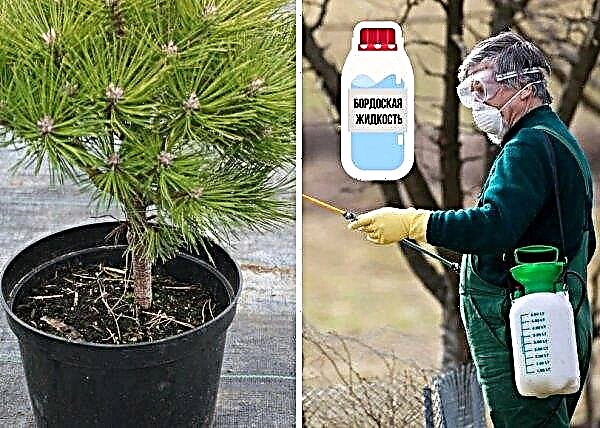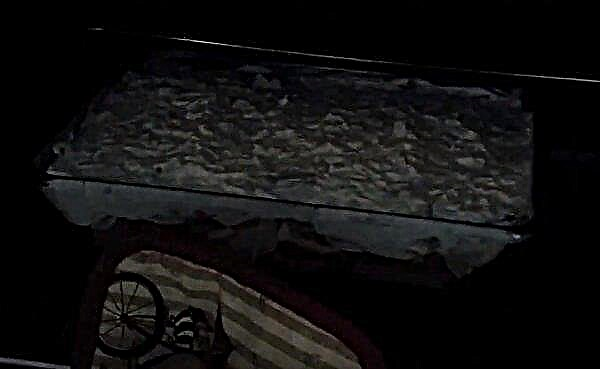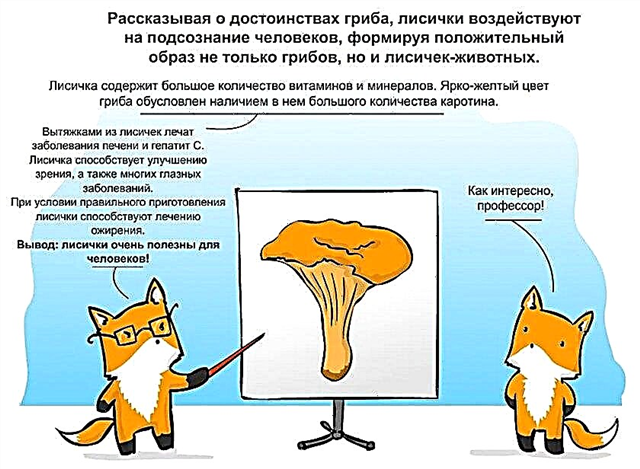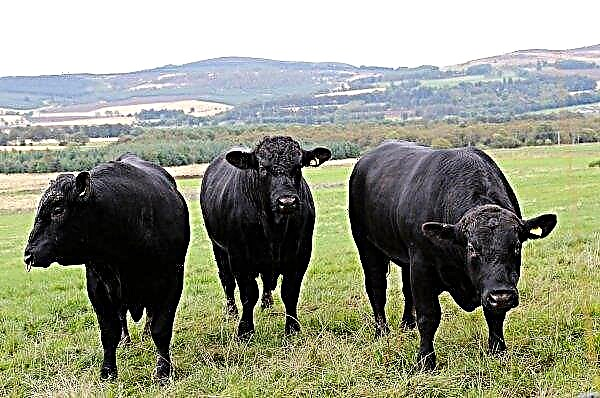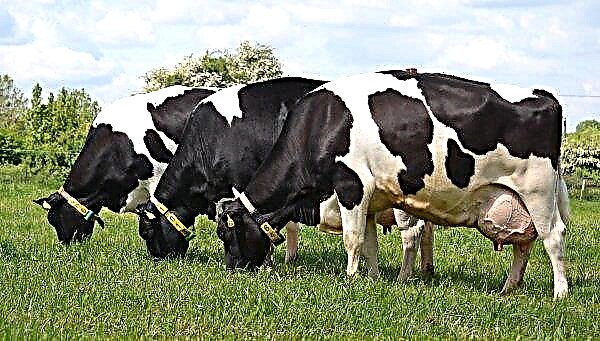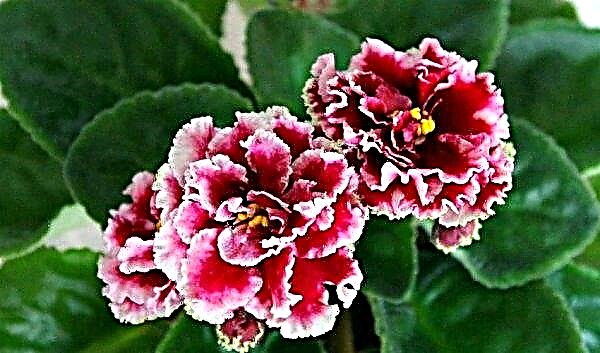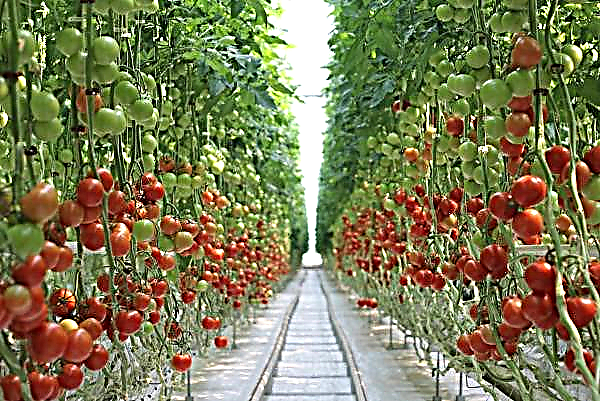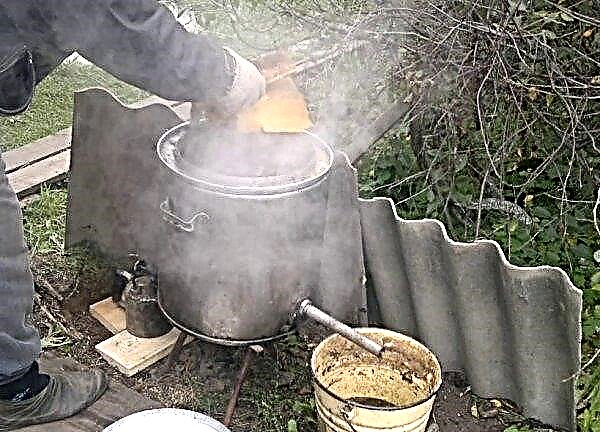Tobacco Trapezond is characterized by high smoking properties, as well as resistance to the negative effects of weather conditions. Read more about the variety and its varieties, as well as the rules of cultivation at home, read below.
History and description of the variety of tobacco Trapezond
Trapezond is an old variety that combines several varieties of tobacco. This is an old Asia Minor type. Originally grown on the Black Sea coast of the Caucasus, Turkey. As the vegetation spread to other areas farther from the Black Sea coast, by means of selection, various varieties of Trapezond began to be bred, which have their own differences.

Varieties of tobacco
The variety Trapezond is represented by medium and tall plants. Their shape can be conical or oval. The main stem is erect, of medium thickness. The leaves are raised, arched. Painted in green. Their surface is smooth. The central vein is pronounced. On one plant, from 20 to 30 leaf plates are formed. Pale pink flowers are collected in corymbose inflorescences.
The final product is a reddish hue and a yellow-orange gamut. Refers to skeletal tobaccos, that is, those that are used as the main, basic raw material for filling cigarettes, cigars. It has increased strength, low aromaticity, good taste, which in different grades can be more or less pronounced.
Varieties of Trapezond are mid-season crops. They tolerate drought well.Did you know? Before tobacco, pear leaves were smoked in Europe.
Trapezond red flower
The variety ripens in 97 days. It is represented by cone-shaped plants. Leaves - petiolate, narrow-edged, broadly oval in shape. The commodity yield of foliage from one plant is 34.1 g, which is about 33 leaves. The final raw material is yellow-brown in color. Refers to skeletal-aromatic products.
For the processing of raw materials, airborne oxygen-shadow drying is used. The disadvantage of this variety is the complete lack of resistance to disease.
The disadvantage of this variety is the complete lack of resistance to disease.
Trapezond anthocyanin color
A variety with excellent quality characteristics. Resistant to disease. From one plant, the output of marketable leaves is from 26 to 33 pcs.
The final raw material has a bright rich taste and medium strength (5 out of 10 possible). After drying, it acquires a light brown color. Belongs to the skeletal type. The variety is easy to process.
 To obtain high-quality raw materials, it is highly desirable to use methods of fermentation or long exposure
To obtain high-quality raw materials, it is highly desirable to use methods of fermentation or long exposure
Ulstman
A good variety of medium-strong aromatic tobacco. Smoke from the final raw material is distinguished by its softness and light aroma. It belongs to the skeletal-aromatic type.
Productivity is average or above average. Leaves are smooth, of sufficient density. The final product is a brownish tint.
Trapezond 182
Disease resistant, high yielding variety. From one plant get from 28 to 31 leaves. Raw materials are of good density and large size.
Plants are of medium height, with well-developed large leafy petiole-type plates. On the leaves, a slightly pronounced tuberosity is noted. The apex is slightly pointed. Ripening occurs in 84-104 days, depending on the intensity of lighting.Did you know? Tobacco belongs to the Solanaceae family and its closest relatives are tomato and bell pepper.

Trapezond 92
Unlike other varieties, this species is suitable for cultivation in the middle lane, and not just in the southern regions. It is characterized by high resistance to various diseases of fungal origin. Matures in 84 days. From one plant receive 38-40 commodity sheets.
The final raw material is of good quality. Belongs to the skeletal type and is suitable for all types of bags. To obtain high-quality products, only shadow drying and mandatory fermentation are used.

Trapezond 15
This variety is a tall bush - about 1.5 m. From one plant receive 14–20 leaf plates with high quality indicators. The variety is characterized by high resistance to fungal diseases and some bacterial diseases. The final raw material is brown. It has an average strength and light aroma.

Tobacco planting at home
All tobacco crops are thermophilic. Plants are able to take root in the central and even northern latitudes, but their qualitative indicators will be much worse. The seed method of growing tobacco is practiced only in the southern regions, in the rest it is advisable to engage in seedling vegetation. For regions with a short summer period, it is generally not recommended to plant tobacco plants in open ground, but to grow them at home in pots or in greenhouses.
Sowing seeds is carried out in February. Sowing preparation begins 3 days before planting. First, the seeds are soaked for a day in a solution of tartaric acid. The proportion is calculated depending on the number of seeds - 1 g will require 3 ml of tartaric acid and 100 ml of water. It is important to ensure that the air temperature in the room during this period is maintained within +25 ... + 30 ° С.
After a day, the planting material should be removed from the solution, lightly dried on a paper towel and spread out in a 3 cm layer in an enameled or ceramic bowl. For several days, the seeds are kept in this state, periodically moistening them from the spray gun. The air temperature is maintained within the same limits as when soaking.

The soil for tobacco is prepared by well-drained and fertilized organics. In equal proportions mix:
- leaf humus;
- rotted manure;
- peat;
- sand;
- ordinary garden soil.
Before sowing, the soil mixture must be decontaminated with a hot solution of potassium permanganate (1 g of substance per 1 liter of boiling water) or wood ash (300 g of ash per 1 liter of boiling water). Soil moisture before sowing should be about 50-60%. Seed consumption - 1 g per 0.25 m². Before planting, it is necessary to level the soil, and then disperse the seeds on its surface. After that, the seeds must be buried in the soil by 3 mm by indentation or sprinkled with a layer of wet sand 3 mm high.
Did you know? Tobacco until the end of the XVII century was called "dry drinking." And only at the end of the century the process began to be called "smoking".
Further crop care is as follows:
- Daily moistening with a small amount of water - maintaining soil moisture within 50%.
- Ensuring the temperature regime within + 20 ° С.
- Transplantation into separate peat containers when 4 true leaves are formed on plants.
- Fertilizing - the first is applied 10 days after the pick. The interval between top dressing is 10 days. Use a mixture of 10 g of potassium salt, 25 g of superphosphate and 15 g of ammonium nitrate, diluted in 5 l of water or chicken droppings, with a concentration of 1: 7 with water.
At the age of 40-60 days, you can plant in open ground. Approximately, having calculated the terms for the growing zone, 7 days before the final dive, it is necessary to begin the hardening process. In the same period, watering should be reduced to a minimum, and completely stopped 3 days before planting.
 Hardening involves the adaptation of vegetation to the environment
Hardening involves the adaptation of vegetation to the environment
To do this, first gradually reduce the temperature in the room to a similar, outdoor. Then they begin to put vegetation outside in the daytime: first at 4 o’clock, and every day increasing this interval by 4 hours. It is important to "accustom" the plants to spend 24 hours on the street before transplanting.
For tobacco, a well-lit area is selected. In early spring, digging soil to a depth of 20 cm. For each square meter of soil, under digging, 20 kg of plant compost or rotted bedding from poultry animals, 10 kg of sand + 400 g of wood ash are added. A week before planting, they dig again and then water the entire plot with Fitosporin diluted with water (5:10). The liquid flow per square meter will be approximately 2.5 liters. Plants are planted in the ground when it is warmed to a depth of 10 cm to a minimum of + 10 ° C. The period begins from mid-April to mid-May for different regions.
A distance of 20 cm is left in the row between the plants, 70 cm between the rows themselves. The pits are formed so deep that a peat pot is placed in it. After planting, 1 liter of water is poured into each well. At the same time, inflorescences and side shoots are removed. Do this with sharpened garden shears. At the end of the manipulation, sections are necessarily treated with wood ash.
Features of tobacco care at home
Caring for tobacco plants has practically no differences from other vegetable crops. Includes measures for moistening the soil and loosening, fertilizing.
Important! Most varieties of tobacco are often infected with fungal diseases and are attacked by pests, so special attention should be paid to preventive measures, as well as to study in advance information about possible problems.
Watering
After transplanting seedlings, for the entire growing season, watering is carried out 2-3 times. For each bush contribute 8 liters of water. Immediately before the hydration procedure, carry out the removal of inflorescences and stepsons.
Top dressing
After planting, after 2 hours, a mixture of slurry with superphosphate is introduced under the bushes of tobacco. Feces are diluted with water 1: 7 and add 20 g of mineral fertilizing.

The following top dressing is carried out when inflorescences appear. They are preliminarily removed, and then sprayed on the sheet with infusion of onion husks. To make it, add 5 kg of husk to 5 l of water. Cook over low heat for 20 minutes. Insist a day, and then diluted with water 1: 0.5. 200 g of wood ash per 5 l can be added to the infusion. Such top dressing is carried out 2-3 per season with an interval of 10 days. In addition to enrichment with vitamins and minerals, this type of fertilizer is a quality protection against pests and fungal diseases.
Weeding
The soil under the bushes of tobacco should be loose. Cracks and hard crust should not be allowed. Weeding should be carried out every week, as well as after every rain and watering. Along with weeding, weeds must be removed.

Diseases and Pests
Tobacco culture is often affected by various diseases:
- Grouse - manifests itself in plants cultivated on low nutrient soils. The main control measure is the urgent application of fertilizers containing nitrogen, potassium, phosphorus. You can use a mixture of manure (dilute 1: 2 with water) and wood ash (200 g for each liter of liquid). This composition is applied not under the root, but on the leaf, after 5 days, urea is sprayed (5 g / 5 l of water).

- Mosaic disease - most often manifests itself after 2 weeks after transplantation into the open ground. The disease is bacterial in nature. There is practically no cure for it. Infected specimens are transplanted to another place, but it is better to uproot and burn them immediately.

- Leaf and stem rot - The most common tobacco damage. Infected plants are carefully examined. Instances that can be saved are cut off (remove all areas affected by rot). Those who began to rot the stem at the root, uproot and burn. Slices on plants are treated with a mixture (1: 1) of wood ash with Fundazol. For prevention, the entire area of localization of tobacco is sprinkled with this mixture. Also, when infected with rot, it is necessary to ensure that the area is constantly dry.

- Blackleg - not treated. Infected specimens are uprooted and burned.
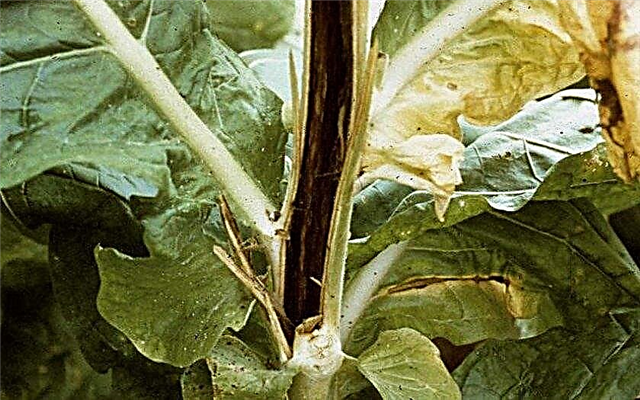
- Powdery mildew - eliminated by removing all infected parts of the plant, followed by dusting on the leaf and soil with wood ash. It is very important to loosen the soil before dusting. If it is too wet, then a mixture (1: 1) of peat and sand should be added to the cultivation area, under loosening. This move will help reduce moisture and eradicate fungal spores faster.
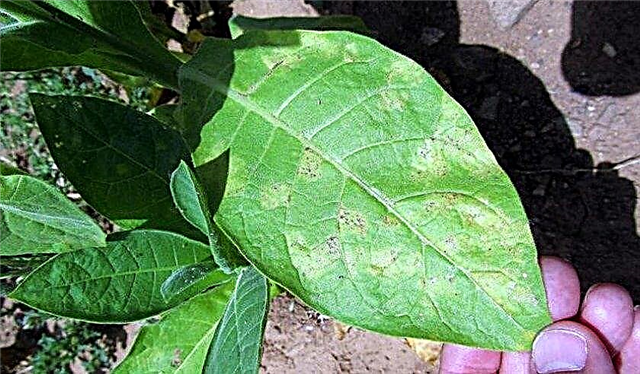
- Brown spotting - not treated. All infected plants need to be uprooted and for 5 years do not plant solanaceae in this place.
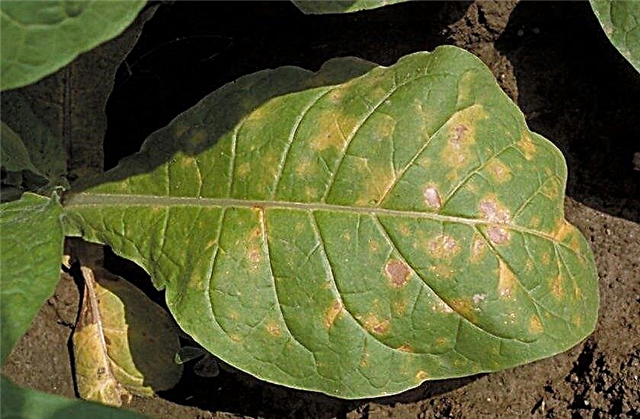
- Under - manifests itself as spots on the leaves when the temperature drops or a sharp change in weather conditions. The leaves, which are covered with spots, are removed and treated with infusion of onion husks with ash.
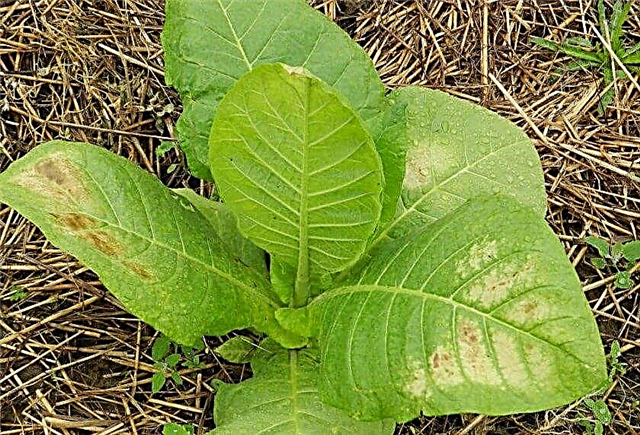
Of pests for tobacco are dangerous aphids, scale insects, thrips, as well as various types of caterpillars and slugs. To control pests, you can use the drug "Actara" or "Inta-Vir." Bred them according to the instructions. In addition, you can use a 1% solution of Bordeaux liquid for spraying on the sheet and soil.
In order to prevent the development of diseases and the spread of pests, several basic rules must be observed:
- Timely carry out preparatory work on the site.
- Monitor the condition of the soil and maintain optimal humidity, according to the phases of vegetation.
- Fertilize on time.
- Do not thicken the landing.
Important! You can use chemicals to fight diseases and pests no later than a month before the harvest.
Tobacco collection and processing
The collection of leaf plates is started when they acquire a lighter color and cease to increase in size. Harvest cut with scissors in the evening. Start from the lower tier. After a couple of days, the middle ones are cut off when they reach maturity, and then the uppermost ones.

Next, the raw materials are processed by drying:
- The sheet plates are laid out on paper or a fabric cut on the floor in the room.
- After a day, the leaves are collected in bundles 2 cm thick, stacking one on top of the other. In this state, the raw materials can withstand 3 days. During this time, once a day, the middle part of the leaves is pulled out of the pile and laid out at the ends of the bundle. The whole process pursues the goal of “galling” the plates - it is necessary that the leaves turn yellow and they leave as little green as possible. The fact is that green raw materials are not subject to fermentation, so all areas of this color will have to be cut.
- The yellowed raw material is stringed with a thin needle - a puncture is made at the junction of the petiole with the plate. The main conditions in this period: air temperature + 25 ° C and above, humidity 50-60%. In the drying process, the sheets simultaneously undergo additional fermentation.
- The dried-up foliage (the goal is achieved when the entire central vein has withered) is taken out for the night into a humid room - it can be outside, onto dew.
- In the morning, remove the central vein on all sheets and cut.
- They are kept on the battery or in a warm room for a month - the main thing is not to overdry the raw materials very much.

When the tobacco is dried proceed to fermentation. The technique involves the use of vodka and honey. In a jar with a capacity of 200 g lay dried tobacco, pour 1.5 tbsp. l vodka mixed with 0.5 parts of honey. The contents of the jar are thoroughly mixed and covered with a lid. Put a pot of water on the fire, on the bottom of which a piece of cloth is placed and a jar is placed on it.
When the container with tobacco is heated, the lid is removed, steam is released from the can, and it is closed again. After that, the can is kept in boiling water for 2 hours. Then rearrange it hot on the battery and do not touch for 2 weeks. After this time, open the jar, dry the raw materials and use as intended.
Did you know? During the Great Patriotic War of 1941-1945. Tobacco was on the list of the main components of soldiers rations.
Tobacco Trapezond is a sortotype combining several varieties similar in morphological characteristics. The raw material of these varieties is skeletal, therefore it is used in all mash makers when filling cigarettes, cigars. Such varieties are easy to grow at home on their own.








